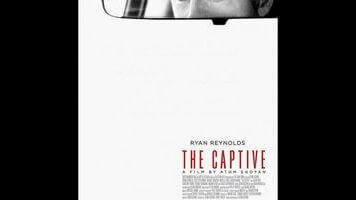No one jumbles chronology quite as elegantly or effectively as Atom Egoyan, the once-great Canadian filmmaker who hit his creative peak in the mid-’90s and has been basically floundering ever since. Telling a story out of order is, by now, a very old trick in the screenwriters’ handbook, but Egoyan regularly manages to make it feel new again. Even his misfires—and those are almost all he makes anymore—usually commence like gangbusters, using temporal leaps to conceal crucial information and create waves of cognitive dissonance. The writer-director has constructed his latest, the kidnapping thriller The Captive, in the same enthralling, nonlinear manner as his Exotica and The Sweet Hereafter. Unlike those back-to-back masterpieces, however, it hits on no essential emotional truths. The structural gamesmanship is just a smokescreen, a way to obfuscate the pulp nature of what is, ultimately, little more than a glorified, low-aiming potboiler.
Still, it’s easy to be seduced, at least for a while, by the sense of mystery, which Egoyan cultivates through his usual rearrangement of the timeline. As parsing the relationships is one of the film’s basic pleasures, it’s best to remain vague about the specifics of how the characters are connected—though savvy viewers will sort all of that fairly quickly. In a cozily domestic basement lair, a young woman (Alexia Fast, as the eponymous captive) sings and plays a piano, pausing sometimes to deliver monologues about her experience into a tape recorder, seemingly at the behest of her captor, Mika (Kevin Durand). Elsewhere, parents Matthew (Ryan Reynolds) and Tina (Mireille Enos) drift apart, their marriage destroyed by the disappearance of their 13-year-old daughter—a tragedy for which Tina blames Matthew, perhaps rightfully. And special-victims detective Jeffrey (Scott Speedman), partner of Nicole (Rosario Dawson), investigates the disappearance of a different woman, questioning a white-collar type (Bruce Greenwood) who works with Mika.
Like Adoration, another late-period Egoyan effort that starts promisingly before going off the rails, The Captive is a puzzle that fascinates so long as it’s scattering its own pieces, but disappoints once the full picture becomes clear. At heart, this is Law & Order storytelling: Speedman’s driven cop is a hothead in the Elliot Stabler mold, hurling accusations with unprofessional glee, while the fellow officers in his unit trade quips. (“I’m young at heart,” one proclaims. “And old everywhere else,” another responds.) The central conspiracy also feels like something out of a turn-of-the-millennium Dick Wolf episode, with the police eventually stumbling upon a cabal of diabolical abductors whose schemes involve not just kidnapping kids, but also spying on their devastated parents. “Internet technology keeps leaping ahead,” Dawson’s character soberly intones, sounding less like a savvy detective than a paranoid parent who’s just read an alarming, 2001 Time magazine study on chat-room stalkers.
At Cannes, the film went by Captives, presumably to distinguish it from Chantal Akerman’s The Captive. But the temporarily pluralized title made some sense: As in last year’s Prisoners, which similarly treated hoary genre material with poker-faced seriousness, there’s a sense that all of the characters are trapped—by their guilt, by their grief, by their obsessions. Egoyan coaxes credibly haunted performances from some of his cast (including an anguished Reynolds), and he uses the shuffled scene order to demonstrate the depths his distraught characters sink to, sometimes leaping in one cut from happy times to several difficult years later. But the film’s nobler intentions are extinguished by its mounting absurdities, especially those involving pedophiliac bogeymen. Durand, wildly overacting, plays his villainous Mika like a Gotham City rogue. He’s kind of written that way, actually: At one point, the mustache-twirler imprisons one of the cops on his case in a van/mobile cell, designed to evoke an unpleasant memory from her childhood.
After the recent Devil’s Knot, also about children in peril, it’s arguably more satisfying to see Egoyan slum in distinctive style than default to anonymous prestige mode. The Captive, which gets dumber and more trivializing as it goes, never lacks for a personal imprint. It’s possible, for example, to read the dastardly Mika as a kind of filmmaker proxy: The villain engineers a tragic scenario, voyeuristically filming the survivors for entertainment purposes, and even “directs” his captive, asking her to deliver her speeches with a different inflection. But if the movie is a critique, it’s one that indulges in the same base cinematic impulses it may be identifying. A tasteless thriller is just a tasteless thriller, no matter what order it’s told in or how artfully it’s dressed up.









































